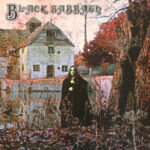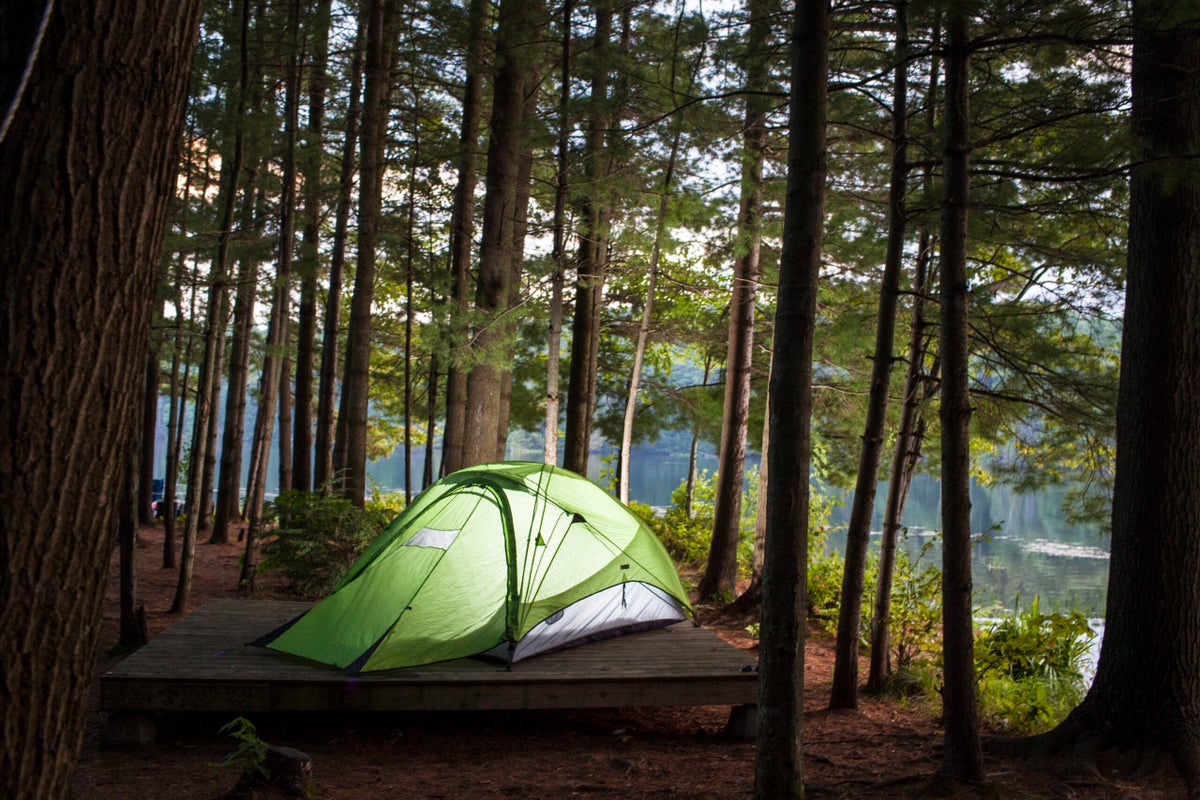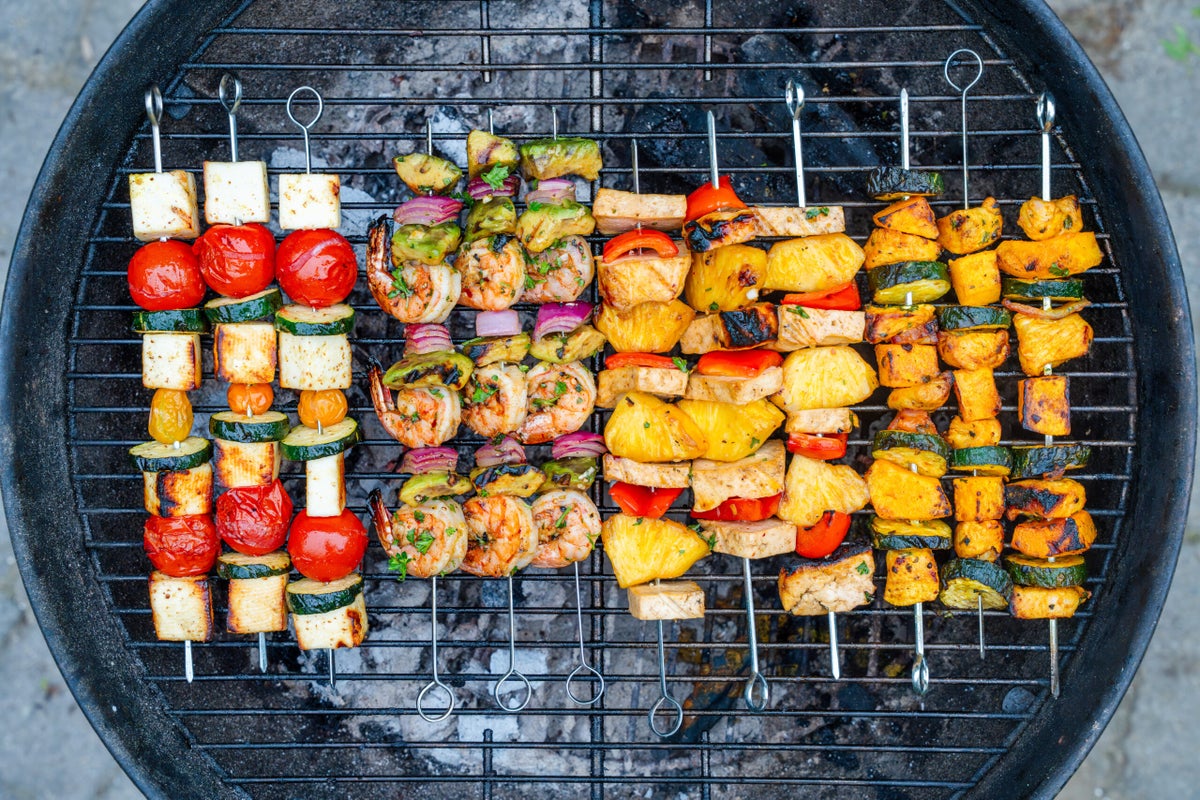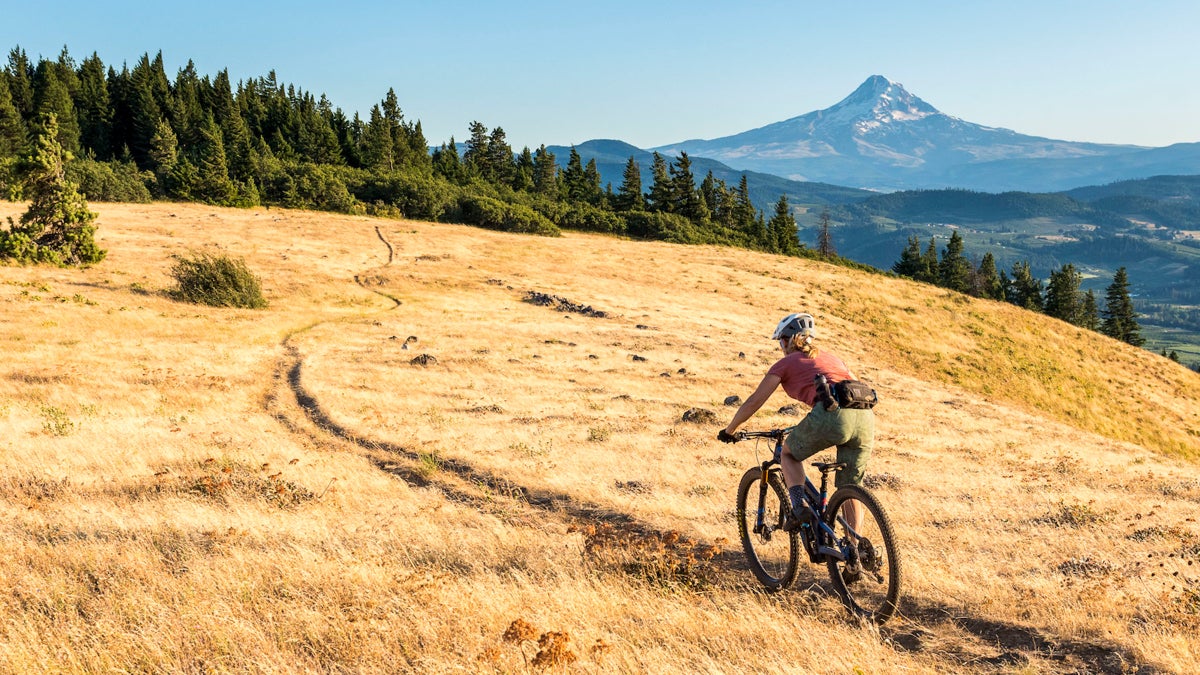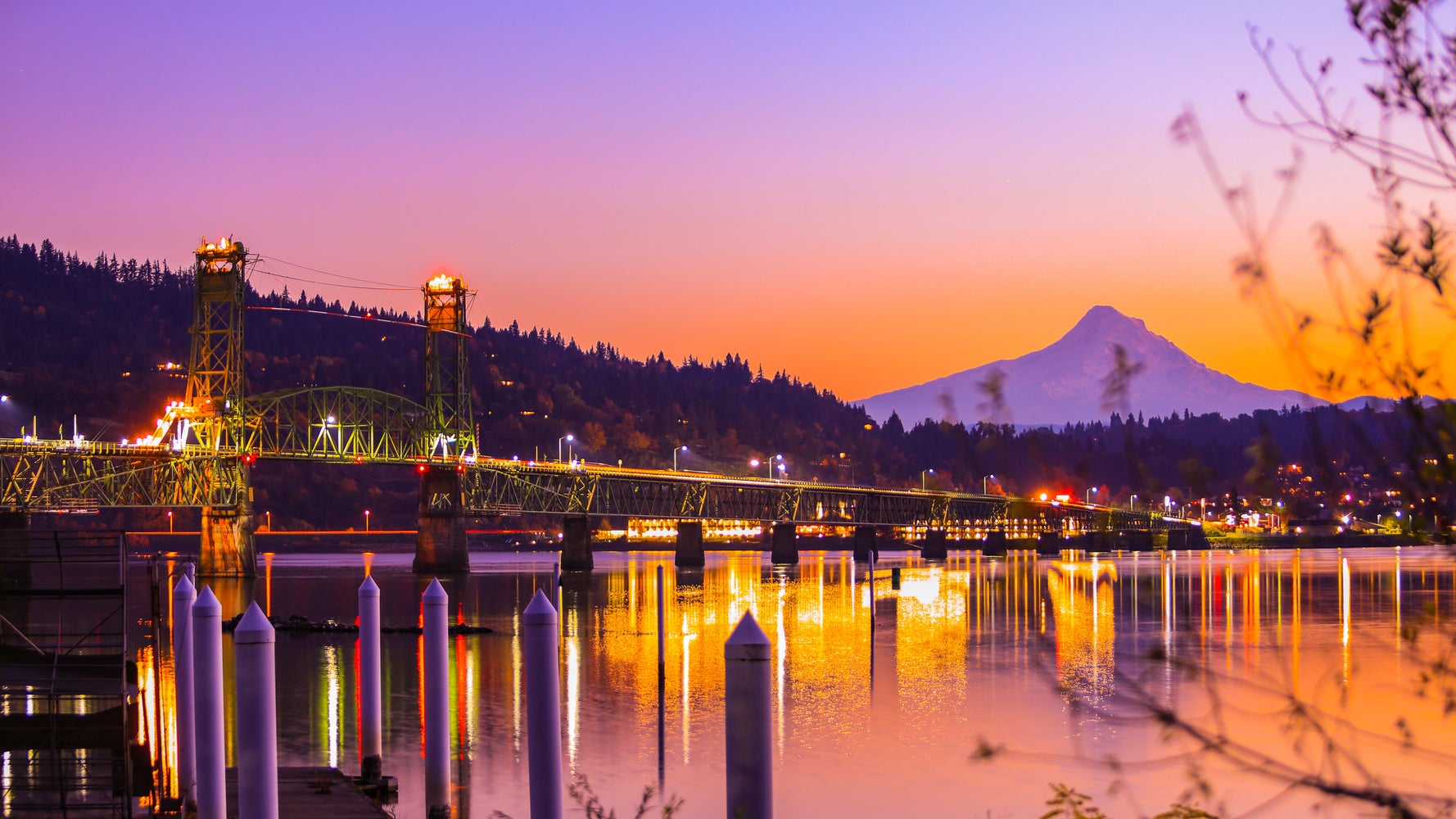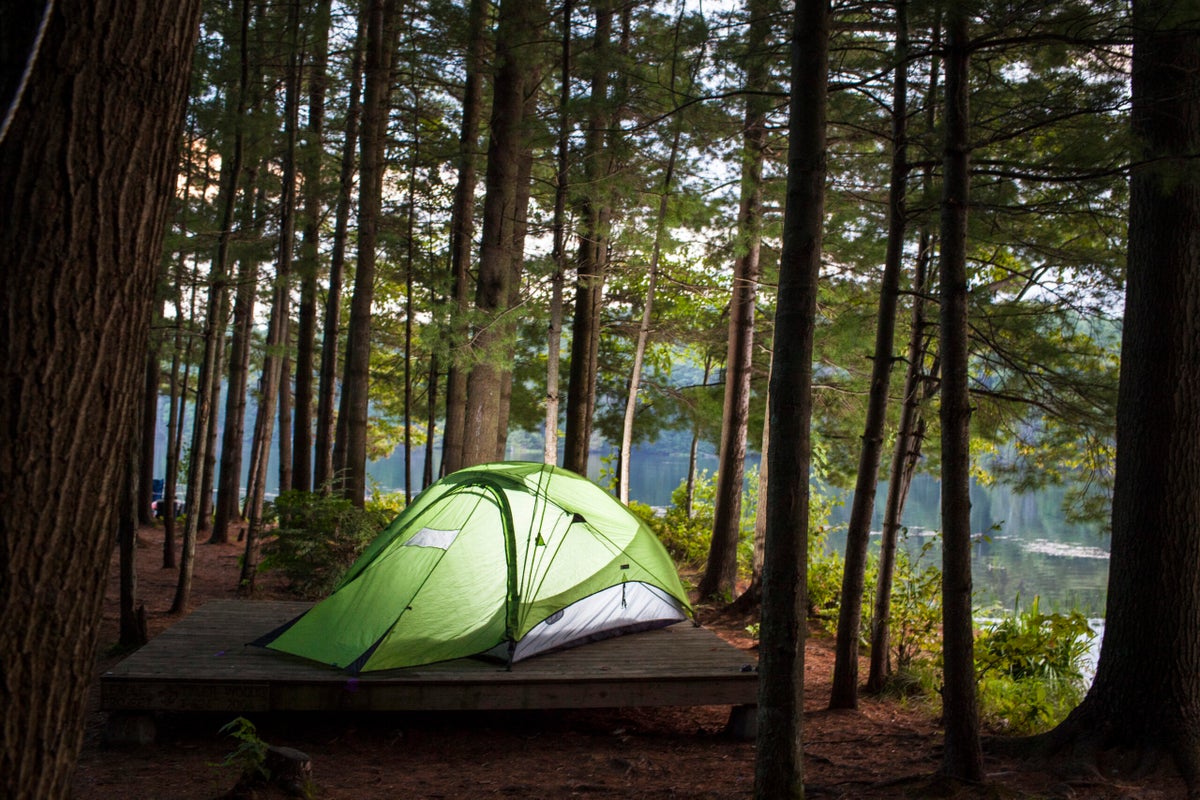
It’s going to be harder than ever to pitch your tent inside a national park this summer. Scoring a campsite at our popular parks is difficult during any stretch of warmer months, when parks see a surge in visitation. And the Trump-mandated National Park Service layoffs are adding an extra wrinkle to many summer travel plans. Some park units have had to delay the release of their campground reservations, while others are choosing to keep certain campgrounds closed for the summer due to staffing issues. In other words, if you don’t already have a reservation for a campsite in a national park, you probably aren’t going to get one.
Have no fear. I’ve been in your shoes multiple times, rolling into national parks in search of a legal spot to pitch my tent, only to be turned away because every campground was fully booked. What I’ve learned over the years is that the campgrounds inside national parks aren’t the only camping options available. Many of our park units are surrounded by national forest and BLM land, which often offer less crowded campgrounds, many of which are first come/first serve.
The rise of platforms like Hipcamp has resulted in many private landowners welcoming campers to their farms and ranches near parks. So if you’re hoping to explore some of our popular national parks this summer, you have more camping options than you may realize.
I’ve consulted with the folks at Hipcamp, begged for secrets from other adventurers, and compiled some of my own favorite campsites to create this list of the best campgrounds near the most popular national parks in the country.
Yosemite National Park, California
Summer in Yosemite National Park is amazing. The waterfalls, the perfect weather, the picture-perfect granite domes.It’s so incredible that it can feel as if all of America has descended on the valley to witness the beauty. All of Yosemite’s campgrounds require a reservation during the summer, and those spots are snagged fast. Reservations are being released late this year because of the staffing issues, so there’s still a chance you could snag a campsite for fall (reservations for September 15 to October 14 are being released on June 15), but if you want to hit Yosemite during the summer, you’ll need to camp elsewhere.
Evergreen Lodge: Groveland, California
Evergreen Lodge is a full-on outdoor resort with historic cabins, a general store, onsite adventure guides and a campus full of lawn games like bocce and ping pong. It also has a campground full of brand new for 2025 glamping tents (from $210 a night), each of which comes with full access to the resort amenities, from the salt water swimming pool to the nightly s’mores around the campfire. The best part? It’s located just one mile from Yosemite’s less-crowded Hetch Hetchy entrance in the northwest corner of the park. From there, it’s a little over an hour to Yosemite Valley, but you don’t have to venture that far to experience the park. Hetch Hetchy is loaded with hikes, lakes, and waterfalls. If you’re up for an adventure, hike the 13-mile out and back to Rancheria Falls, which wraps around the Hetch Hetchy Reservoir, in the shadow of Hetch Hetchy Dome, before ending at a long series of cascades through a narrow gorge just upstream of the eastern edge of the manmade lake.
McCabe Flat Campground, BLM Land
The BLM operates three established campgrounds on the Merced River off of Highway 140 near the western edge of Yosemite, all of which are first come first serve. McCabe Flat Campground is the best, with just 11 sites and access to a sandy beach and deep swimming hole on the river. Obviously, bring your swimmies and sunscreen.
Yellowstone National Park, Montana
Ah, Yellowstone…Geysers, wildlife, and some of the most popular (read: hard to book) campgrounds in the entire national park system. Fortunately, Yellowstone is flanked by Custer Gallatin National Forest, which operates 14 campgrounds within 35 miles of the park. Add to that the bevy of privately owned campgrounds in the direct vicinity of Yellowstone, and you have plenty of options for bedding down this summer.
Canyon Campground, Custer Gallatin National Forest
Most of the forest service campgrounds near Yellowstone require reservations, which are released six months in advance, so you might have a hard time scoring one of those sites at this point. But Canyon Campground has 17 sites (just $10 a night) are first come/first serve, and they sit near the Yellowstone River just 16 miles from the north entrance to the park. It’s not fancy (there are no showers, no hookups, but many of the sites are surrounded by large boulders, and you can’t beat the convenience or price. Get there midweek if you want to score a spot.
Camp Steelhead: West Yellowstone, Idaho
The privately-owned Camp Steelhead sits on two acres with three sites tucked into the pines, all of which are RV and van-life friendly. There’s plenty of space to spread out if you’re with a group (each site sleeps up to 12), and a trail on an old railroad grade begins on the property that delivers a view of the Buffalo River. The small campground has a porta-potty, water and electrical hookups, and it’s just 30 minutes to the West Yellowstone Entrance (from $85 a night).
Grand Teton National Park, Wyoming
Jackson and Grand Teton National Park can feel like a zoo during the summer, particularly if you’re looking to pitch a tent in the Jenny Lake Campground. Reservations fill fast because of the scenery (the campground has loops on the picture-perfect Jenny Lake with the Tetons looming large in the background) as well as the fact that it’s the only campground in the park that doesn’t allow RVs and generators, so it’s a bit quieter. I just checked the availability for Jenny Lake and there’s exactly one site available on a random Tuesday night in July, so check out these options instead.
Mike Harris Campground, Targhee National Forest
Caribou-Targhee National Forest has four campgrounds in the Teton Basin Ranger District, just west of Grand Teton National Park, not to mention miles of dirt roads with established (and free) dispersed campsites to choose from. The Mike Harris Campground wins based on its location: it’s situated on the Teton Pass, a few miles from Victor, Idaho, and just 22 miles from the Granite Canyon Entrance to the park, near Teton Village, and 20 miles from downtown Jackson. It’s a small campground, just 12 sites, half of which you can reserve six months in advance, the other half are first come/first serve. I like having some first come/first serve options, especially if you can get there mid-week, but get this; the last time I checked, there are still plenty of reservable sites available throughout the summer. The sites are tucked into a forest of lodgepole pines and Douglas firs with plenty of privacy, and you’ll have access to Trail Creek, which has healthy populations of cutthroat and brook trout. Spots are just $17 a night.
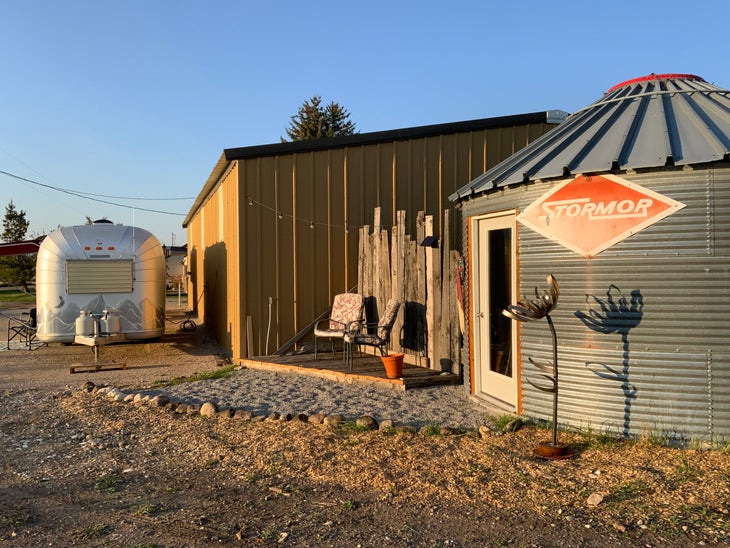
Ranchita Corazon of the Tetons: Teton, Idaho
How about boondocking on a two-acre horse farm with an unobstructed view of the Tetons? That’s what you get when you book with Ranchita Corazon, which has a single spot for RVs and van lifers complete with water and electricity. There’s even a sauna on the property. The farm sits near the Idaho/Wyoming border, under an hour from the Jenny Lake Visitor Center. Spots start at $70 a night.
Rocky Mountain National Park, Colorado
Rocky Mountain National Park had more than 4 million visitors last year, making it the fifth most visited park in the country. That’s nothing new, as it has been a perennial favorite for more than a decade. I tried grabbing a campsite at the last minute several years ago, and ended up pitching a tent in a Yogi Bear’s Jellystone Campground well outside of the park. My kids enjoyed the campground’s putt putt course, but it wasn’t the serene campsite I envisioned.
Olive Ridge Campground, Roosevelt National Forest
There are plenty of developed RV-friendy campgrounds on the Estes Park side of the park (see my Jellystone story above), but if you’re looking for a more primitive and serene experience (read: no putt putt courses), head to Olive Ridge Campground inside Roosevelt National Forest, near the southeastern corner of the park. The 56 sites (from $29 a night) are surrounded by aspens and ponderosa pines, and half of them are first come/first serve. You’re close to the Wild Basin area of the park, with fast access to the Sandbeach Lake Trail, an 8.7-mile out and back to a backcountry lake sitting at 10,000 feet at the base of 13,916-foot Mount Meeker. And it’s just 14 miles south of the main entrance to the park in Estes Park. Take note if you’re going later in the summer, Olive Ridge is going to close for renovations on August 17 .
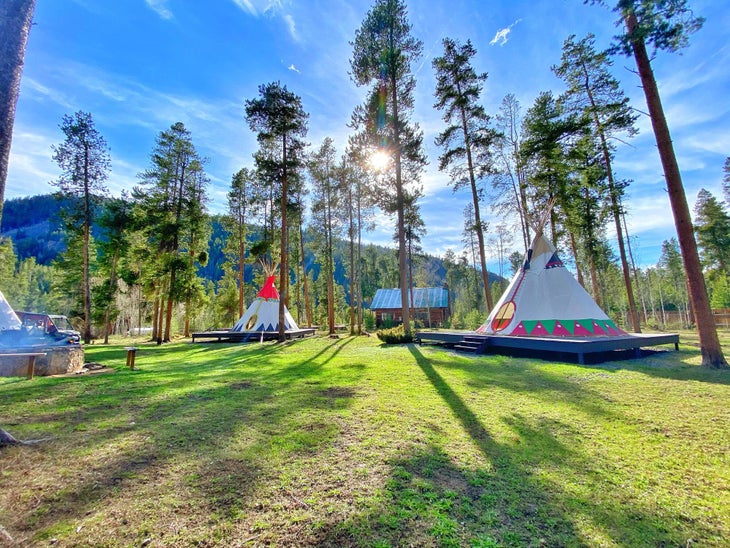
Arapaho Valley Ranch: Granby, Colorado
Most visitors hit Rocky Mountain from the Estes Park side, but Arapahoe Valley Ranch, which has cabins, RV hookups, and tent sites, sits on the quieter western side of the park in Granby, within an hour’s drive of the Rocky Mountain’s Kawuneeche Visitor Center. The 100-acre ranch has a small lake for paddling and fishing as well as a slice of the South Fork Colorado River. There’s a hiking trail onsite that leads to an overlook of the Colorado River headwaters. Tent sites start at $85 a night.
Acadia National Park, Maine
Camping inside of Acadia is more limited than most national parks, as there are only a couple of established campgrounds on Mount Desert Island, the main region of the park that attracts most visitors, and there are no backcountry options for the adventurous. To be honest, there aren’t a lot of tent camping options outside of the park either, as Acadia is flanked by the Atlantic on one side and mostly privately owned land on the other. Like so many national parks, most of the private campgrounds near Acadia cater mostly to RVs, but we did find this one gem that should be on your radar if you have plans to hit Acadia this summer.
HTR Acadia
HTR Acadia may as well be inside Acadia National Park, as its 10-acre campus is located on the Somes Sound, which splits Mount Desert Island in half. From HTR, it’s a 15 minute drive to downtown Bar Harbor, giving you fast access to Acadia highlights like Cadillac Mountain, Sand Beach, and the Ocean Path. Choose from 25 tent and RV sites starting at $69 a night, some of which are actually on Somes Sound. Cool fact: Somes Sound is the only fjord on the East Coast of the U.S. The water reaches depths of 175 feet and the mountains on either side rise 850 feet directly from the water. Bring a kayak or paddle board; private boat docks on the campground allow you to launch into the sound and explore.
Great Smoky Mountains National Park: North Carolina and Tennessee
Great Smoky Mountains is the most visited park in the country, attracting more than 14 million people in 2024. Booking a site inside the park can feel like winning the lottery, and the odds of winning decreased significantly this summer as the park is not opening several of their campgrounds due to a lack of staffing. The good news? The camping options just beyond the park’s borders might be even better than what you find inside the park.
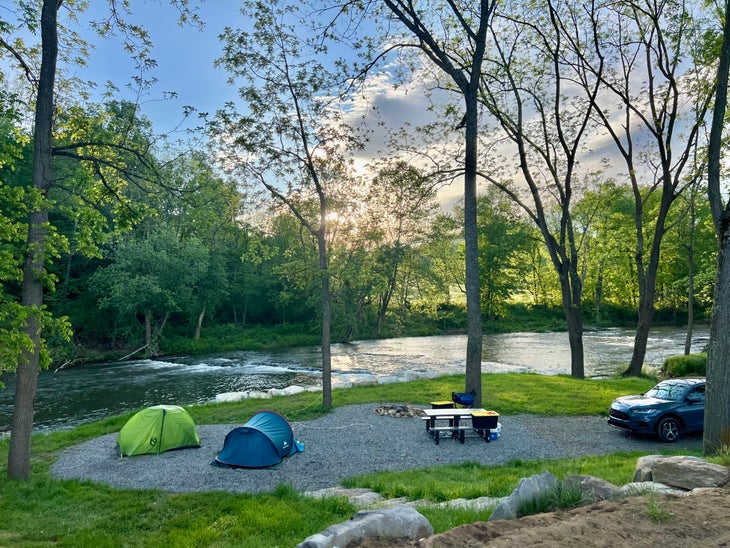
Tsali Recreation Area, Nantahala National Forest
The 42-site campground at Tsali Recreation Area isn’t fancy (no glamping tents here), but you can’t beat the location. It sits on the shores of Lake Fontana, which forms the southwestern border of Great Smoky Mountains National Park. From Tsali, you’re a 15 minute drive from Bryson City, one of the park’s more laid-back gateway towns, where you can hit the trails of the Deep Creek area of the park, which is known for its waterfalls. This is one of my go-to campgrounds because it’s just over an hour from my home and has direct access to 30 miles of mountain bike trails in Nantahala National Forest, as well as Lake Fontana, which is one of my favorite places to paddle in search of rope swings. So bring your kayak or SUP and mountain bike. Spots are $20 a night.
Smoky Mountains Mangalitsa River Ranch: Waynesville, North Carolina
Choose your level of comfort at Mangalitsa River Ranch, a 95-acre farm (complete with horses and pigs!) near Waynesville, NC, on the eastern edge of Great Smoky Mountains. The ranch has cabins, glamping tents on platforms overlooking the river, and 10 primitive tent sites that either offer mountain views or river access. Bring your fly rod, becausePigeon River runs through the property. There’s even a fresh spring providing drinking water. Mangalitsa River Ranch is an hour from the Oconaluftee Visitor Center, where you can see elk gather in the meadows most evenings. You’re even closer to the Big Creek Area of the park (about 30 minutes) where you can hike Mount Sterling Trail, a 5.3-mile out and back that ends at a historic fire lookout above 5,000 feet in elevation.
Graham Averill is Outside magazine’s national parks columnist. He’s found himself inside a national park without a campsite on too many occasions, some times with small children and a disappointed wife in tow. He recently wrote about his love for Great Smoky Mountains National Park, and the perfect sleeping platform that allows you to camp in the back of your car.
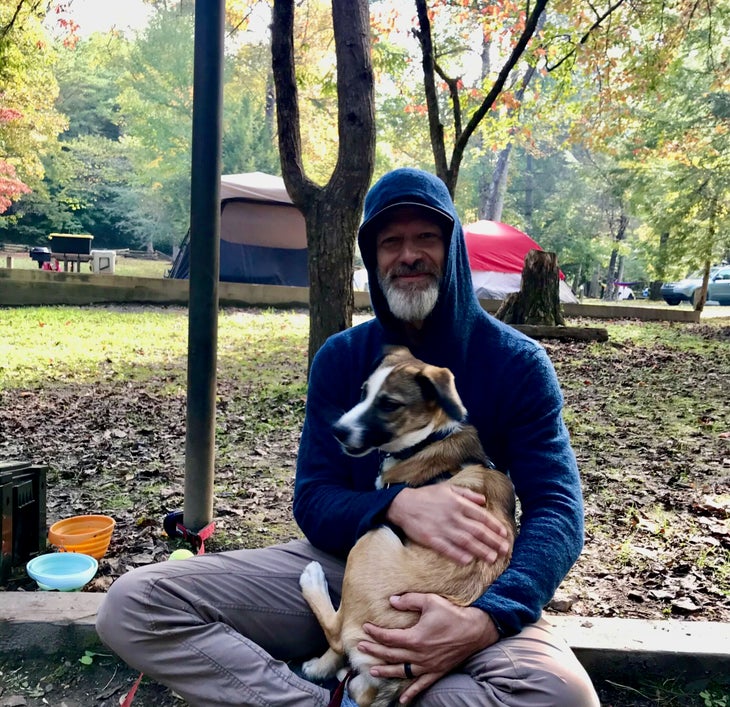
The post The Best Alternatives to Crowded National Park Campgrounds appeared first on Outside Online.

